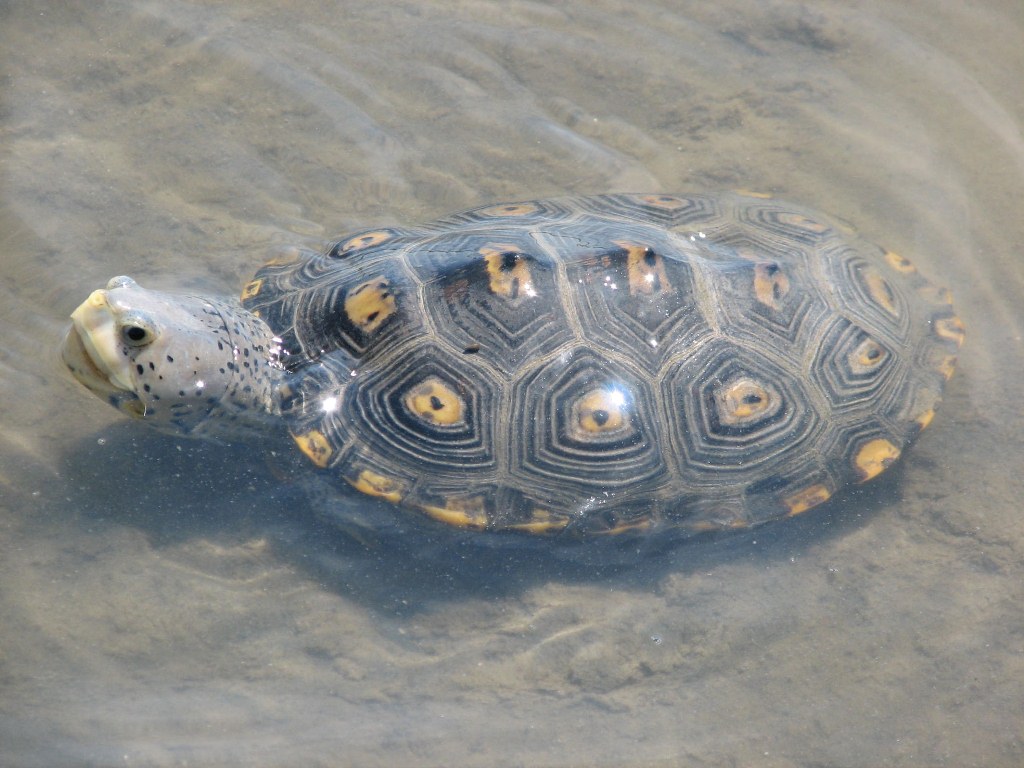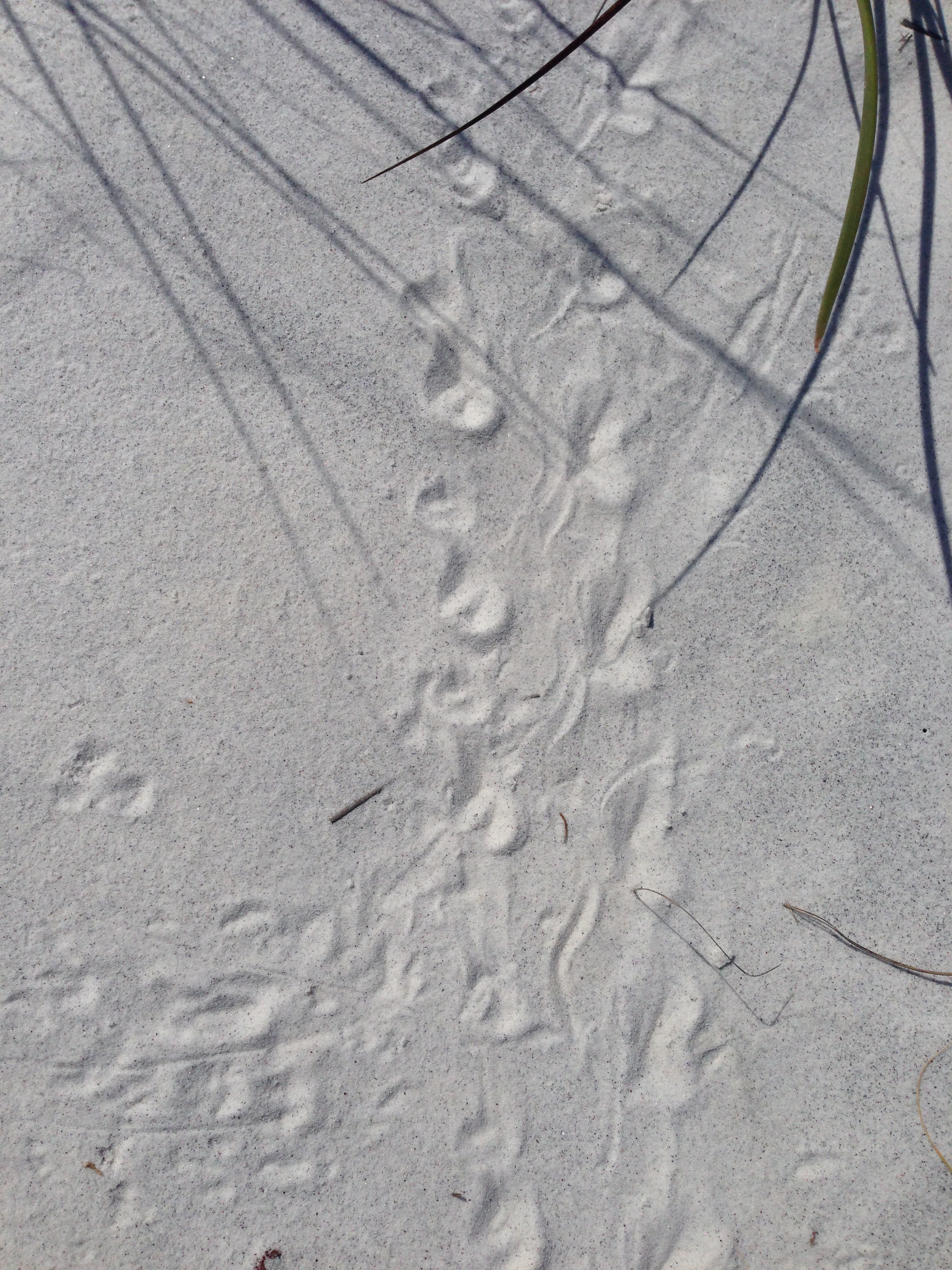When I began working with terrapins 20 years ago, very few people in the Florida panhandle knew what they were – unless they had moved here from the Mid-Atlantic states. Since we initiated the Panhandle Terrapin Project in 2005 many more now have heard of this brackish water turtle.
Diamondback terrapins are relatively small (10 inch) turtles that inhabit brackish environments such as salt marshes along our bays, bayous, and lagoons. They have light colored skin, often white, and raised concentric rings on the scales of their shells which give them a “diamond-backed” appearance. Some of them have dark shells, others will have orange spots on their shells.
The first objective for the project was to determine whether terrapins existed here, there was no scientific literature that suggested they did. We found our first terrapin in 2007, and this was in Santa Rosa County. We have since had at least one verified record in every panhandle county – diamondback terrapins do exist here.
The second objective was to locate their nesting beaches. Terrapins live in coastal wetlands but need high-dry sandy beaches to lay their eggs. Volunteers began searching for such and have been able to locate nesting beaches in Escambia, Santa Rosa, Okaloosa, Bay, and Gulf counties. We continue to search in the other counties, and for additional ones in the counties mentioned above. Once a nesting beach has been identified, volunteers conduct weekly nesting surveys, providing data which can help calculate the relative abundance of terrapins in the area.
The third objective is to tag captured terrapins to determine their population, where they move and how they use habitat. We initially captured terrapins using modified traps and marking them using a file notching system. We then partnered with a research team from the U.S. Geological Survey and now include passive integrated transponder tags (PIT tags) that help identify individuals, satellite tags that can be detected from satellites and track their movements, and recently acoustic tags which can also track movement.
The fourth objective is to collect tissue samples for genetic studies. This information will be used to help determine which subspecies of terrapins are living in the Florida panhandle.
As we move into the summer season, more people will be recreating in our bays and coastal waterways. If you happen to see a terrapin, or maybe small turtle tracks on the beach, we would like you to contact us and let us know. You can contact me at roc1@ufl.edu. Terrapins are protected in Florida and Alabama, so you are not allowed to keep them. If you are interested in joining our volunteer team, contact me at the email address provided.
- Tips for Bear Encounters this Fall - November 10, 2025
- Pensacola Bay Invasive Species Summer Survey 2025 - November 3, 2025
- Our Environment: Part 24 – Our Changing Climate - November 3, 2025


